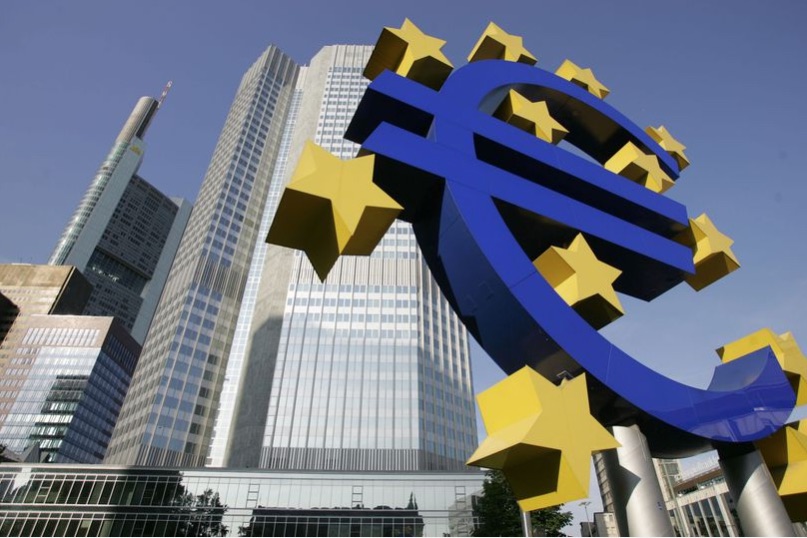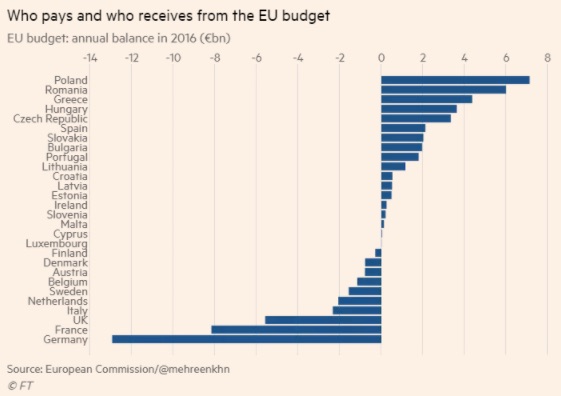The EU budget has its givers and the takers. Clearly in the minus column (below), Germany, France, and the U.K. have been the biggest funders:
What to do when your #3 country leaves and you lose 13 billion (or so) euros annually from your next budget (2021-2027)?
Yes, you could increase your funding or decrease your spending.
But whichever you select, the same questions will need answers. Is cohesion a good enough reason for supporting the Eastern European have-not nations? Should farm subsidies retain their priority? How much to plan for a digital future?
These questions take us to the big dilemmas.
Savers or Spenders?
On the savers side of the budget debate we have the frugal four. The Netherlands, Sweden, Austria, and Denmark have clearly said their taxpayers will not “foot” any extra EU bill. Meanwhile Poland is among the countries that support an uptick to 1.15% from the 1% GNI (Gross National Income) assessment.
Donors or Receivers?
One question is whether weaker economies should continue receiving one third of all spending. Focusing on who gets what, some feel the haves should get less and the have-not nations, more. For now, who gets the most money depends on whether you are categorized as less developed, transition, or more developed. Currently, all get some. But less spending could mean only the poorest get funding.
You can see the development divide:
Conservatives or Reformers?
The split here can take us directly to the past or the future. Supported for decades, with a hefty lobbying presence and 40% of the budget, we have the Common Agricultural Policy and its farm subsidies. Looking ahead, advocates of technology spending propose more of an emphasis on cybersecurity, high-tech research, high performance computers, artificial intelligence, connectivity, digitization.
Security
To all of this we can add the security that has moved higher on the spending list. The EU has just 1,000 border control officers (whereas the U.S. has 60,000). Maintaining that 1,000 level for a seven-year budget would cost four billion euros. An 8-fold increase to 8,000 would run 20 to 25 billion euros.
Our Bottom Line: No Free Lunch
Whether for the EU or the U.S., always spending has a cost. And yet, all too often, the benefits of a spending alternative are expressed rather than what has to be sacrificed.
So, as economists, let’s be sure to look for every decision’s opportunity cost–a next best alternative that is sacrificed.
Or, we can just remember TINSTAAFL when referring to the frugal four and EU choices.
My sources and more: H/T to FT’s “Brussel’s Briefing” (whose un-gated updates I enjoy) for alerting me to the frugal four. At first remaining with FT, I went here, But as I became increasingly fascinated, I went from bruegel.org to euractiv and Politico here, and here. To really understand the EU, I recommend reading all.
Please note that this post was slightly edited after publication to improve clarity.








